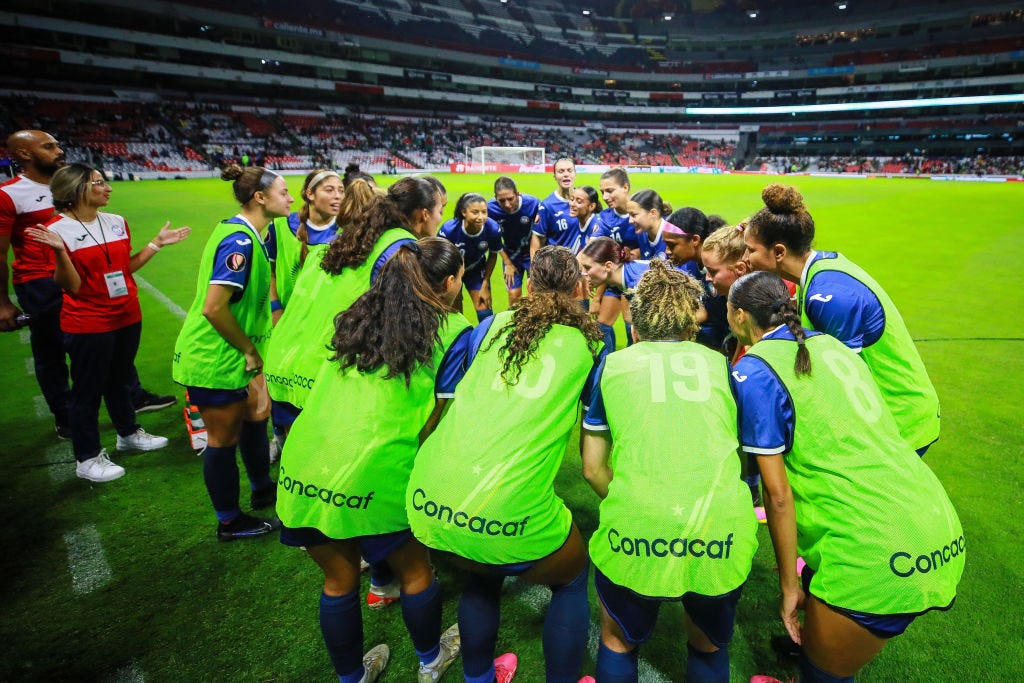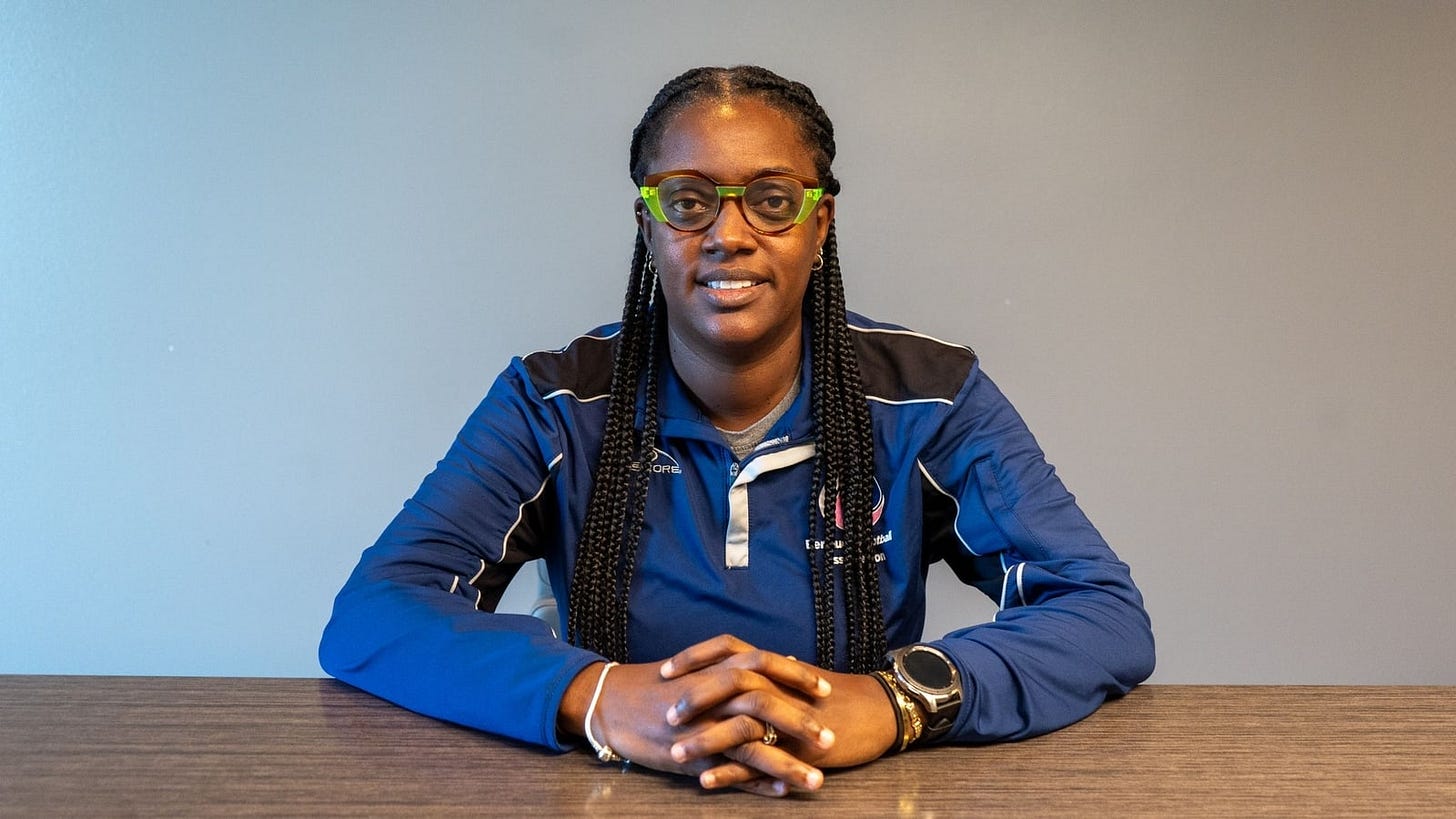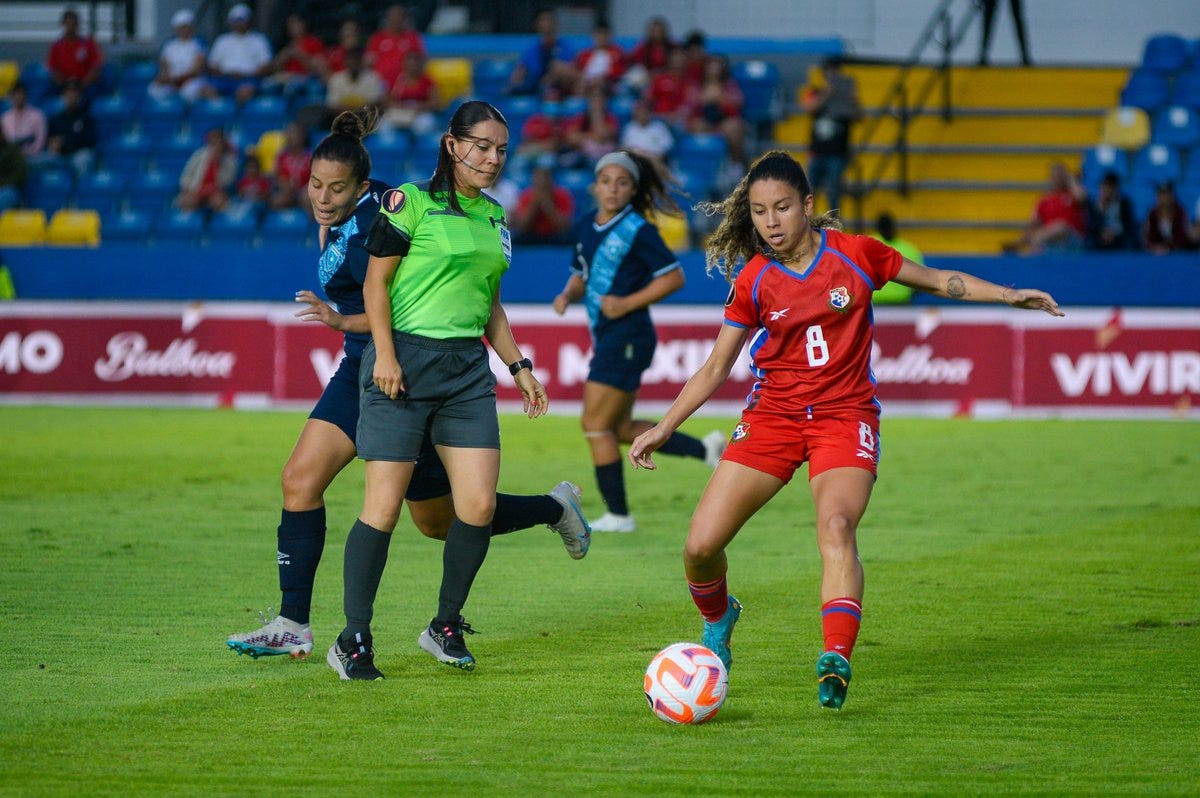🌹🏆 Will Concacaf's new W Gold Cup structure be enough to push women's soccer forward?
We spoke with coaches & officials about investment, development & more.
You’re reading a collaboration between Getting CONCACAFed, a newsletter by Jon Arnold about soccer in the Concacaf region, and Squad Depth, a newsletter by Theo Lloyd-Hughes profiling players & finding deeper stories, usually involving women’s soccer.
Subscribe to both to help us continue to tell these types of stories.
The World Cup in Australia-New Zealand was setting up to be Concacaf’s tournament. After playoff wins by Haiti and Panama, a record six nations from the region qualified for the 2023 edition.
It didn’t go to plan.
Two teams, the United States and Jamaica, made it to the knockout stage. Both lost their first games once there.
Now, it is the first FIFA international break for senior women’s national teams since that tournament. For Concacaf, it brings the promise of a new dawn all together.
The region’s decision-makers already had planned a major overhaul after the World Cup, introducing the “Road to the W Gold Cup”. That competition started started last week and leads to a continental championship set to take place in March.
The question hanging over the push is not whether this will be a step forward, but rather if it will be enough of an investment to improve the historically middle-tier teams in Concacaf. And, in turn, will that eventually push the ceiling of senior women’s national teams in the region higher?
“It definitely is a game-changer, and it’s a step in the right direction,” Bermuda head coach Naquita Robinson said. “I just am hoping there can be something in between if we don’t make it to that next step.
“Let’s not just look at the high level, let’s look at the middle to low level as well to keep providing opportunities for us to go and get better.”
It may sound obvious, but a major hurdle for the “middle to low level” nations in the region is just playing matches. Visas and travel costs make it prohibitively expensive for some federations to regularly organize training camps or friendlies. Most staff are on part-time contracts.
There is also the matter of national teams getting meaningful matches under their belt. The time between competitions is often far too long to build momentum and develop. The final round of World Cup qualifiers, for nations that didn’t make the eight-team tournament in Monterrey, was back in April 2022.
Some nations have played only a handful of matches in the past 18 months. The “Road to the W Gold Cup” means for three consecutive FIFA windows Concacaf will have regional qualifiers between its Leagues A, B and C.
El Salvador, who are in League B, is one of these nations that is dying for more competitive soccer to be scheduled.
“We don’t have the money and all the resources of other countries,” El Salvador manager Eric Acuña said. “This is an opportunity to show the world that we can do this in a good way, too. We can go to the stadium and have fun playing football too. It feels important. They make us feel important, and that’s something good to do the sport in a better way.”
Of course, aspiring federations want to compete against better national teams that provide an opportunity to be truly tested. Let iron sharpen iron. Spend a minute with Acuña, and you, too, will soon be ready to run through a brick wall and upset the Concacaf apple cart.
Acuña was quick to add that his team has won 89 percent of its matches in the two and half years that he has been in charge. La Selecta’s 9-1 victory over Martinque on Sunday punctuated his point. If La Selecta gets into the W Gold Cup then it will also mean improved competition.
But it’s an uphill battle. The 2024 W Gold Cup will feature 12 teams, but just eight from Concacaf. Four spots are being handed to the top CONMEBOL teams from the 2022 Copa America (Brazil, Colombia, Argentina and Paraguay).
The U.S. is also already guaranteed a spot, with either Canada or Jamaica taking another. That leaves a total of just six spots up for grabs between the 17 nations spread out in Leagues A and B.
This is where the idea of wanting to launch a starry new regional competition clashes with trying to do what is best for mid-tier Concacaf nations clashes.
Acuña admitted he would “love” to see a tournament only for Concacaf nations. He says it is frustrating that qualification has been made more “difficult” because of the South American presence. But he’s also a realist. He knows the addition of Brazil and Colombia in particular will mean more top teams, more media coverage, and perhaps a better product overall.
Fresh from a first-ever World Cup, Panama and head coach Ignacio Quintana has recent experience playing some of the best teams on the planet.
Yes, qualification for the W Gold Cup has been made more challenging, but isn’t that what you want? Maybe if not direct investment, then the tournament will at the very least create exposure and eventually lead to more concrete opportunities.
“I am grateful because these tournaments give us, as small federations, the opportunity for the world to know us,” Quintana said. “It is important that people see us, that people see these players and that they know the talent that there is also in the country.”
But for that exposure to pay off you need your best players on the pitch. Some of the issues keeping teams from succeeding go far beyond what Concacaf can resolve with an updated schedule.
Jinelle James, Trinidad and Tobago’s Director of Women's Football, says retaining players after they play in the youth levels can be complicated.
Unlike in Central America, where girls usually have seen teammates play in top pro leagues and, in most countries, can aspire to play domestically, many Caribbean countries don’t have the same potential player pathways.
“In the Caribbean, what tends to happen, if the opportunity is not presented, is life happens,” James said. “Now you have responsibilities. Now you have to pay bills.”
Trinidad and Tobago’s senior team is in flux, James said, partly because of those realities and partly because of how seriously the twin-island nation took the Covid-19 pandemic. Many women who were regulars before shutdown orders didn’t return to the national team setup.
Just eight of the 23 players that played in the 2023 World Cup qualifiers for the Soca Warriors are back for “Road to the W Gold Cup”. An all-too-familiar reset button has been hit. In the short-term, this tournament is not going to change the federation overnight.
“It’s the start. It’s literally the start of getting where we need to. It’s like we were waiting for that shotgun going off,” she said. “This initial Gold Cup is great for opportunities. It’s great for exposure, but it needs to ignite certain things to be put in place.”
Opportunities outside of the sport also are an issue for Bermuda, even as it sees its player pool grow rather than shrink. After a double from Jaden Masters pushed the Lady Warriors to a victory over the Dominican Republic, Robinson had to bid farewell to her goalscorer.
The University of Houston midfielder has class, not to mention a Thursday game in Big 12 action. But in addition to working around those schedules, the Bermuda coach also has to keep the work schedules of some locally based players in mind, not only when making roster selections but even when scheduling training sessions during camps.
Juggling the NCAA calendar is something Puerto Rico manager Nat Gonzalez is working on as well. With Puerto Rico pulling many players from the United States mainland and also sending girls on the island to NCAA teams, it’s tough to get players into camp when class is in session.
Gonzalez himself is the head women’s soccer coach at UC-Riverside.

“It’s a little bit problematic until we get some pros and the FIFA window actually means something,” he said. “I’m missing out on players because they’re in their college season. That part is hard because obviously Concacaf and FIFA aren’t going to tailor anything to American soccer in the Concacaf system.”
His Puerto Rico team led Mexico for most of the first half at the Estadio Azteca before falling 2-1 in last week’s opener, promising early returns for the level of competition in League A, which has the biggest chance of pushing the region’s World Cup teams to become more competitive.
In international soccer, where everything is judged on what happens at the end of a long four years, it can be difficult to tell what development strategies worked and what didn’t for some time. The answer of whether or not the new Concacaf Women’s structure works well enough, whether it’s enough of a step up in investment, may not be answered until 2027 or even later.
For now, there are a lot of nations who could see progress hampered by an inability to qualify for next year’s W Gold Cup. Next year’s Concacaf international calendar will return to looking rather sparse for those nations that find themselves on the wrong side of the qualification line in December.
The opportunity and investment will likely be palpable for those six nations that make it. But for those that don't? We will be holding our breath to see examples of holistic investment, resolving scheduling conflicts and domestic league growth.
Concacaf did not return interview requests to speak with women’s soccer development leaders for this article









This is great stuff! Great collab too!